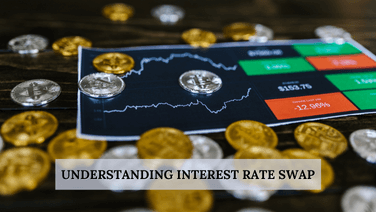Understanding USD/INR Forward Dynamics
30 April 2019 | By IFA Global | Category - Financial Market Products and Strategies

Post the announcement of the RBI B-S swap, USD/INR forwards has been the focus of much discussion. It is unusual for the forwards to be this volatile and create headlines. This is because the forward points represent the interest rate differential between the two currencies, which is usually quite stable. The difference between the spot and the forward rate is also referred to as the basis/cost of carry/premium or discount.
For example, if the 1y interest rate in the US is 2% and that in India is 6%, the USD would trade at a 4% premium against the Rupee i.e. if USD/INR spot rate is 70, the 1y forward rate would be 72.80. (Rs 2.80 is the interest on 70 Rs placed at 4% for 1y). 72.80 is referred to as the no arbitrage forward price. If the 1y forward trades at any rate other than 72.80, it would present an arbitrage opportunity.
If it trades higher than 72.80, let’s say 73.00, then, one can exploit the arbitrage opportunity by borrowing in Rupee at 6%, converting Rupee into USD at 70, entering into a forward contract to sell USD after 1y at 73 and lending the USD (investing USD at 2%). This is known as cash and carry arbitrage. The transaction would result in an arbitrage profit of 0.28% (Since the interest of Rs 3 on Rs 70 for 1y is equivalent to 4.28%)
Arbitrage Profit (0.28%) = -6% (cost of borrowing in INR) + 4.28% (Implied rate in the Buy USD today, Sell USD forward transaction*) + 2% (Rate earned by investing/lending in USD)
If it trades lower than 72.80, let’s say at 72.50, then, one can exploit the arbitrage opportunity by borrowing in USD at 2%, converting USD into INR at 70 today, entering into a forward contract to Buy USD 1y forward and lending the INR at 6%. This is known as reverse cash and carry transaction. The transaction would result in an arbitrage profit of 0.43%
Arbitrage Profit (0.43%) = -2% (cost of borrowing USD) -3.57% (cost of Selling USD today and buying USD 1y forward*) + 6% (Rate earned by lending/investing in INR)
Therefore, whenever the 1y forward price deviates from 72.80, arbitrage forces would cause it to converge to 72.80. However, there are instances when the forward points can be dislocated from the no arbitrage price when an ascertain section of the market cannot capitalize on the arbitrage opportunity because of regulatory constraints. Besides interest rate differential, supply and demand of USD and INR also influence forwards. An abundance of USD or Shortage of INR in the banking system or both tends to result in forwards getting paid. Shortage of USD or Excess INR liquidity or both tends to result in forwards getting received. In extreme cases of USD shortage, we may even see the forward premium flip into a discount for near tenors. ***
The term structure of the annualized forward premia in India up to 1y is downward sloping****. This is because, in the near months, the demand and supply are roughly balanced as a result of exporter receiving interest and importer paying interest. However, at the far end exporters do have receiving interest but importers are reluctant to pay a higher premium and therefore forward points tend to be depressed. As far as exporters are concerned, whenever the term structure flattens out it is better to receive farther out i.e. book forwards with longer maturities and whenever the term structure is steep, it is advantageous to receive near term and keep rolling over.
USDINR 1 Year Annualized Forward Premium Chart

*This transaction of Buying USD today and simultaneously entering into a contract to sell USD forward is referred to as a B-S swap in the interbank market. The trader is said to have received the premium in this transaction.
**Rs 2.5 is equivalent to 3.57% earned on Rs 70 for 1y. The sign is negative as it is a cost as one is selling USD at a lower rate today i.e. 70 and buying at higher rate forward i.e. 72.50. This transaction of selling USD today and simultaneously entering into a contract to Buy USD forward is referred to as the S-B swap in the interbank market. The trader is said to have paid the premium in this transaction.
***The same logic can be extended to Cash-Spot margin as well. Whenever the market is desperate to generate Rupee in Cash by Selling USD (i.e. Rupee liquidity deficit scenario), the Cash-Spot margin tends to widen. Whenever the market is desperate to buy USD in cash from Rupee (i.e. Cash Dollar shortage), the cash-spot margin tends to narrow.
****Though the absolute forward points for farther months are higher, the difference in forward points month on month reduces. For example, if the 1M forward points are 30p, 2M would be 58p, 3M would be 55p and so on. The difference in premium month on month is therefore reducing i.e. 30p, 28p and 25p.



